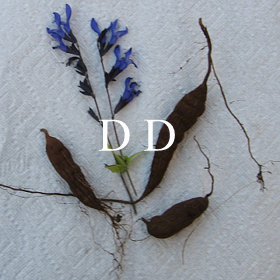Saturday, March 20, 2010
Our Lady of Mt. Carmel of Haiti
A friend of mine had the icon photographed professionally. I'm really pleased the way it turned out.
Sunday, March 14, 2010
Interior Castle I
Interior Castle I - Terry Nelson, 2010
acrylic on clay-board panel 8" x 8"
.
Based upon Teresian Carmelite spirituality, the allegory comprises aspects of St. Teresa's Interior Castle; the soul in mortal sin, entry into the first mansions, as well as the poetry of John of the Cross; "One dark night... I went out unseen..."
.
Narrative:
.
In her book, The Interior Castle St. Teresa speaks of her vision of the soul as "a most beautiful crystal globe, like a castle in which she saw seven dwelling places, and in the seventh, which was in the center, the King of Glory dwelt in the greatest splendor... Outside of the castle all was darkness, with toads and vipers and other poisonous vermin. While she was admiring this beauty which the grace of God communicates to souls, the light suddenly disappeared and, although the King of Glory did not leave the castle, the crystal was covered with darkness and was left as ugly as coal and with an unbearable stench, and the poisonous creatures outside the wall were able to get into the castle, such was the state of a soul in sin." - Fr. Diego de Yepes
.
The description by de Yepes is what I attempted to illustrate in this painting. The fly and the creatures are shown outside the globe, while inside it is dark and moody, perhaps hiding the creatures who remain in the inner first rooms of the castle. I couldn't very well show the soul in mortal sin as Teresa described it since in Chapter 2 she discusses how the globe is covered as if in pitch - while the Blessed Trinity remains at it's deepest center - no light is emitted to the soul. I suggest the presence of the Trinity by the three fires at the base of the mount. The three flames and the mount in turn suggest the coat of arms of Carmel, hence the mount surmounted by the cross, albeit barely visible. The mount encircled by clouds also suggests Mt. Sinai, and the giving of the Law to Moses. The murky waters surrounding the mount suggest the moat Teresa describes around the Interior Castle. The reflected window represents God's grace enlightening the soul.
.
I think that covers it - it's a fairly literal illustration of Teresa's vision and subsequent development in the first chapters of her book. With the toads and the vipers I included an owl, the medieval symbol of evil, as opposed to the modern interpretation of the owl as a symbol of wisdom - this is meant to suggest not only erroneous opinion and teaching which infect the soul, but serve to warn against one's personal attachment and vain exultation over one's intellectual prowess. In sum, the vile creatures represent sin, and the worldly affairs which distract and ensnare the soul and keep it from penetrating further into the inner chambers of the castle, close to the King of Glory.
Wednesday, March 3, 2010
St. Jospeh and the Child Jesus
Retablo: St. Joseph Refuge of Sinners - T. Nelson 2010
.
9.5" x 5" Acrylic on canvas in Cuzco style carved mahogany and gilded frame.
.
Several years ago I acquired this tabernacle-style frame with a painted image of the Divine Mercy, the image was so badly painted I gessoed over it and decided to paint another. In the meantime I framed a holy card image of the Divine Mercy in a small tin nicho, and this suited me more than this elaborate frame. I then decided to paint a Spanish Colonial style retablo for the frame instead, although I never returned to do it until last week. As March was approaching I decided to paint my patron, St. Joseph of the Child Jesus.
.
Though I am not Carmelite, I wear the scapular of Our Lady of Mt Carmel, and venerate St. Joseph under the title of Protector of Carmel*, which is a sort of subtitle for this image which is officially titled, "Refuge of Sinners". The prototype for the retablo was an image I once saw in a magazine with the same title, although in the case of this painting, I worked from my imagination. The style of the composition mirrors the images of Our Lady under the same title, "Refuge of Sinners".
.
The image is Cuzco-school inspired, although I used no gold assiste (painted gold lining and hi lights) for the patterns on the clothing, and my brush work is not nearly as fine as Latin American works.
.
*On St. Joseph's mantle one can notice an abbreviated coat of arms for Carmel as well as the monograms of Jesus and Mary. And yes - the image is rather "Royalist" or "Monarchist" - ah, what does that reveal about my true self, huh?
Subscribe to:
Posts (Atom)



